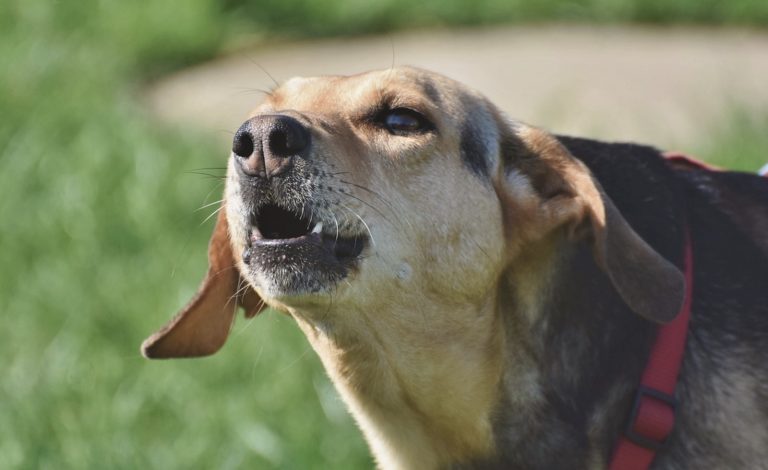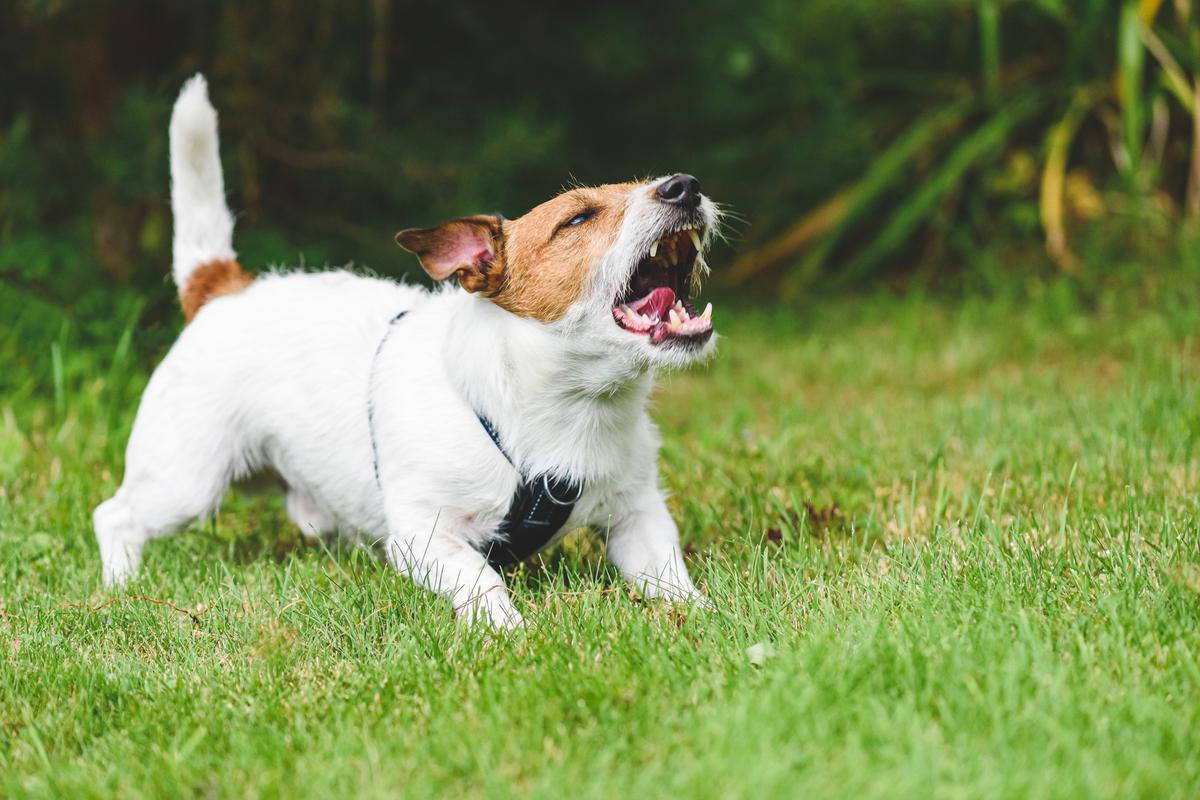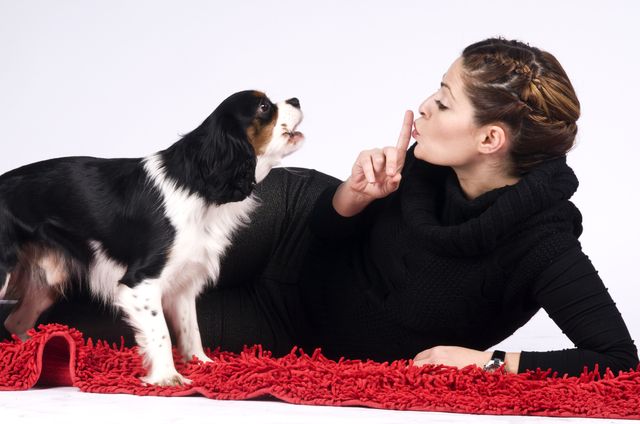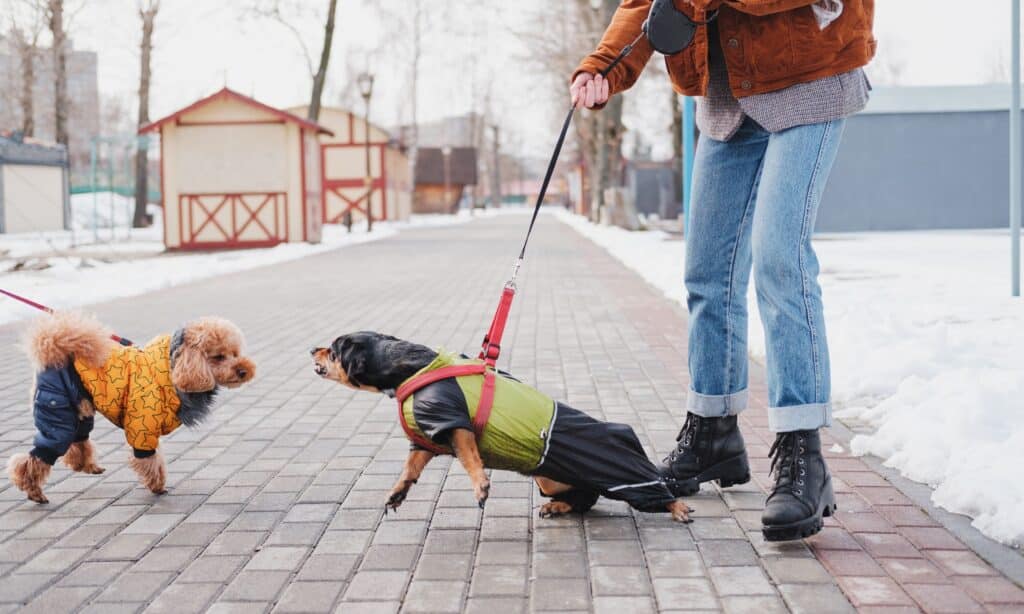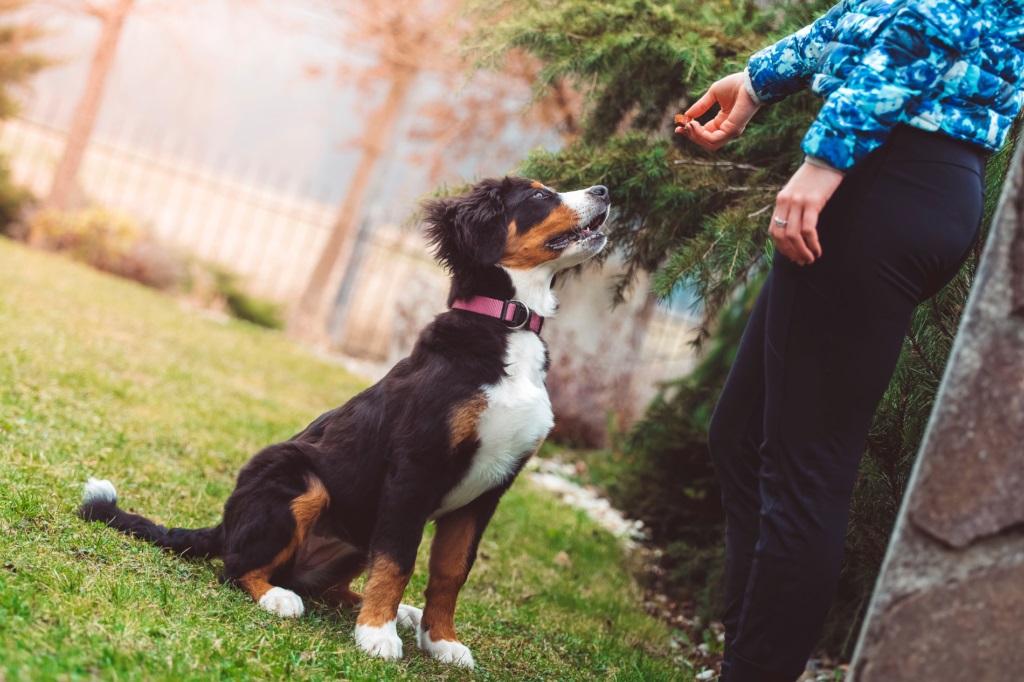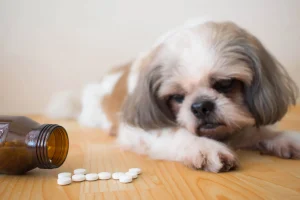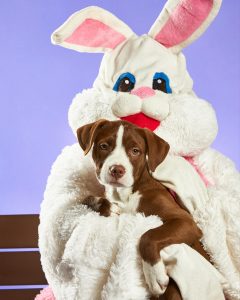What is a reactive dog? Why does your dog react? What can you do to help your reactive dog be calm and well-mannered?
Practicing with your dog will take time. But if you put the effort, time, and energy into it, you will see your puppy get calmer and more relaxed. Today, we will talk about how to get there.
How To Define Reactive Dogs?
First thing first, we have to define dog reactivity. There is a difference between a reactive dog and an aggressive dog.
Simply put, a reactive dog is one that behaves inappropriately to a particular situation or a stimulus. For example, your dog can show aggression towards dogs, hate strangers, or doesn’t react calmly and mannered in a certain situation.
That is the best answer to what is a reactive dog. Any professional dog trainer or dog behaviorist will tell you the same definition.
Reactivity can come in different shapes and forms. Usually, it manifests as barking and biting. But you can also say that whining, hiding, shaking, panting, and pacing are also signs of a reactive dog. Sometimes, these puppies shut down completely.
For some dogs, the triggers are quite specific. For example, large dogs, bicycles, men with beards, men with sticks, and so on.
Why Is My Dog Reactive?
Before you can work with your dog to solve his reactivity, you have to understand his triggers. What drives the undesirable dog behavior?
There are many different reasons for canine reactivity. But here is a fun fact: the brain activity in a reactive dog is similar to the brain activity in an anxious human being.
Similar to us, they have brains and bodies programmed for survival. Dogs learn through experience and association.
This is why you can help your dog with reward-based dog training. Your dog’s brain will associate certain behaviors with the feel-good factor they get from rewarding and praising.
And with several repetitions, that good behavior will be embedded in the brain and become automatic. This is what professionals call a neural pathway.
But this association can work the other way too. If your dog associates a stimulus with fear, danger, or similar feelings, it will react.
What Can Cause Your Dog To Become Reactive?
As we said before, you have to find the trigger for your dog’s reactivity. But that is the trigger. What can serve as the cause?
- Poor breeding. in dogs, the stress hormone cortisol can pass from the mother to the puppy through the placenta. This is why you should not get a puppy from a puppy farm, usually, there are distressed mothers
- Lack of socialization on your behalf. This is something you should pay extreme attention to. It is of utmost importance that you introduce your puppy to different items, places, people, situations, animals, and so on
- Pain. Take sure your dog is not in any kind of pain. If your dog feels pain, it will react. Just like us, dogs are sensitive when they are unwell
- Fear of the unknown. This is why socialization plays a huge role. Again, we cannot stress this enough. Socialize your puppy with different people, kids, situations, and so on, not just with animals
- Unkind treatment. Dogs that have been beaten or berated will react aggressively in the beginning. They need to go through a long period of socialization and reactive dog training before they can behave calmly again
Can You Train A Reactive Dog?
Of course. This is what you should do. Now that we established what is a reactive dog, let’s talk about how you can help your reactive puppy.
Training will require time, patience, and management. First and foremost. Dog training classes are NOT the right place to train a reactive dog. Why? Because overexposing your puppy to its triggers will not help. It might only make matters worse. No, your puppy WILL NOT get used to the problem.
Instead, your positive reinforcement behavior adjustment training should be calm, controlled, and tailored to an individual puppy.
Sometimes, scent work class might work, because it gives your dog something to do. But not all dogs can be trained in the same way.
It is all about finding what gets your puppy excited and willing to work with you.
Why Distraction Doesn’t Work?
One thing a professional dog trainer might suggest is distracting your puppy from the trigger. Now, this might work in select situations. But you cannot consider distraction a long-term solution for dogs’ reactivity.
Why? Because redirection and distraction are not solutions. Do you want to lure your dog away with a cookie for the rest of his/her life? And do it every single time you pass another dog or a person?
Training that puts all emphasis on redirecting and distracting will fail one day. Yes, there are situations where you can distract your puppy, like a tug toy or ball during walks, but they do not work as a long-term solution.
Here is one thing we often forget. No dog owner is perfect and will see the trigger before the dog does. And then you have an accident. You cannot react fast enough.
What you want to do is to condition an emotional response. What does that mean? It means that if a dog reacts to a trigger, it is already too late.
With smart training, you can train your dog not to react to triggers.
Can Your Dog Improve If It’s Been Reactive For A Long Time?
Every dog is different, and every dog needs a different approach and time to get to the finish line. And even though your dog has been reactive for a long time, you can still reverse the bad aggressive behavior.
But keep in mind it takes a lot of time to un-train a behavior. For example, if your dog has been reactive for say 5 years, the change will not come in 5 days.
By using some combination of sniffing and counterconditioning, you can calm any dog and make your walks relaxed and focused.
Can You Train A Dog That Is Not Food-driven?
First and foremost, you cannot say a dog is not food-driven. Every animal is food-driven. That is their instinct. If animals were not food driven, they would be dead.
But yes, there are dogs that refuse dog food like kibble or a dog treat. But that is because they are too stressed to eat or you have not found the treats your dog loves.
It is important to find the right dog treat for your canine friend.
Should You Bribe Your Dogs With Treats?
No. Of course not. Nobody wants to bribe his/her dog for the rest of his life. You start with treats to change the dog’s conditioned emotional response.
And while you will probably use lots of dog food and treats in the beginning, you should eventually phase them out.
How To Calm Your Reactive Dog?
Now let’s talk about some ways you can calm a reactive dog. Of course, not all will work for your puppy. But combining them should yield a result.
Set Up A Routine
Here is a dirty little secret nobody tells you. Dogs absolutely crave routine. They are all about routine. Our dogs know our routine. They know when we eat, sleep, drink, work, go out, exercise, and so on.
And they want to have their own routine. A routine helps make the world predictable. And that will prevent any triggers.
When dogs know what comes, whether it is good or bad, they can prepare for it. And the more anxiety your dog has, the more it will crave routine.
This is why you should try a structured walk.
Counter-conditioning
Counter-conditioning is a process of changing the emotions and behaviors your dog exhibits in response to a specific stimulus.
In this case, you work with antecedents and consequences so that you can change the behavior. The antecedent or the trigger has to be noticed, and then reinforcement should happen immediately.
Your reward should come before the dog starts reacting to the trigger and showing unwanted behavior.
Give Your Dog A Job
Dogs that have a job to do are calmer. Why? Because it is a type of routine. For example, you can have your dog carry a ball during your walks.
This little change will do a couple of things in the process. For starters, it occupies your dog’s mouth, making your puppy unable to bark and whine.
And it gives him the satisfaction of doing something that he is rewarded for. Even better, carrying a ball is self-rewarding.
Household Changes
If you have a dog that is anxious and reactive at home, you might consider some household changes. For example, window reactivity is a huge challenge. Why? Because it is rewarding. Your dog barks at strangers, see the strangers go away, and thinks he has done a good job. It is reinforcing and rewarding to your puppy.
Understand Body Language
When you understand your dog’s body language, you can communicate with your canine friend better. Dogs speak through their body language. Here are some examples:
- Happy dogs are loose and wiggly, they have open mouths and relaxed or forward ears
- Nervous dogs display tense body posture and will use calming signals to try and calm themselves down. These calming signals should alert other dogs or people that they mean no harm
- Alert dogs have tense or forward overall body posture, and they are undecided on how to react. Their body posture usually lasts briefly before they either react in playfulness or aggression
- Dogs with aggressive body language are tense, stiff, and possibly frozen. They will show their teeth and hackles will be raised

